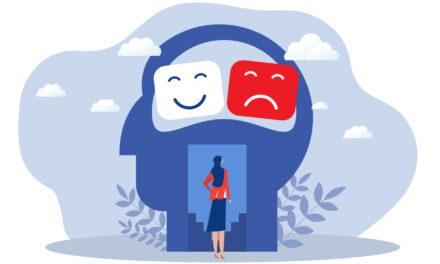Q: I’m the principal of a middle school, and this work is both the most meaningful and most exhausting thing I’ve ever done. I love the feeling of being so connected in a close community, and of sometimes being able to make changes that help students or teachers. But at the end of most days, I wonder how on earth does anyone sustain themselves in this role? It seems like the job requires 125% effort on an average day. I’m worried I’ll either burn out and need to quit or become a more distant and less empathetic leader. Neither of those is what I want. How do I navigate this? What am I missing about making school leadership sustainable and survivable? I also want to create the conditions that will retain my similarly exhausted teachers.
A: I’ve received several questions recently from school leaders struggling with loneliness, decision fatigue, and burnout, and there are no simple answers. You can adopt interventions that are likely to improve teacher retention, and you can identify opportunities to connect with other principals, but real, enduring change needs to happen at the system level.
I discussed your question with Chris Balme, the founding Head of School at Millennium School in San Francisco and a writer who focuses on topics in education leadership and parenting. “I’ve been there too,” he told me. “Too often, it seems like the adult roles in schools are designed for self-sacrificial superheroes. We can’t build and sustain great schools this way. It’s one of the biggest design flaws in schools: We’ve made roles that us ordinary mortals cannot sustain.”
Teachers spend too much time as the only adult in the room, Balme noted, and principals face their own version of this. “They’re immersed in daily issues at school, with hardly any time for meaningful dialogue and support from other principals. Facing hard things alone is a nightmare — getting to face them with trusted colleagues is infinitely better.” At his own school, staff members implemented an adult version of the student advisory program, then met monthly to practice the same skills they teach in student advisory, such as mindfulness, conflict resolution, and emotion regulation. “We found a significant impact on the well-being of both faculty and staff,” Balme said, adding that they also grew closer together as a team. Similarly, principals can improve their well-being by being part of a cohort of school leaders going through ups and downs together.
There’s only so much you can do on your own, however. District leaders also need to prioritize staff retention. If they don’t, there will be a ripple effect because schools with high turnover rates can’t evolve. “All the effort goes to bringing new people on board and recreating culture and processes,” Balme said. “If we want to make schools work better for students, we have to design them with adult wellness in mind. That means that decision-makers need to be mindful of placing too many burdens on principals, even ones that will help students. For example, the recent push for social-emotional learning (SEL) in schools is important, but “we need to start with the adults if we want it to work,” Balme said. “Giving an exhausted and overloaded adult an SEL lesson to teach, without working on their own wellness first, is ineffective and borderline cruel.” What teachers and administrators really need is more autonomy — to feel trusted to make changes, within reason. “Just like our students, we need a sense of agency to access our full motivation,” he added.
Educators also need more time, whether they’re an administrator or a teacher. “Part of the challenge for teachers, strange as it may sound, is that we may spend too much time with our students,” Balme told me. In a study of 34 countries — including the most successful education systems on the planet — researchers found that American teachers spend the most time in front of students. “This sounds good, but it means they had less time to plan or collaborate, sometimes dramatically less,” Balme explained. “Teachers in Singapore’s exceptional schools, as just one example, had 16-19 hours per week of time to plan and assess student work. Teachers in those school systems are more effective with their students, and less prone to burnout, because they have more generous time to plan and collaborate.”
Much of this may be out of your control, but you can agitate for change, whether you join forces with other school leaders or members of your union, write advocacy pieces for publication, collect data that might influence decision makers, testify in front of a school board or — as a last resort — vote with your feet. In the meantime, find ways to spend time with other school leaders who can empathize with your struggles, ease your sense of isolation and help you find meaning in difficulties. Try to set reasonable expectations for yourself and maintain good boundaries. In addition, focus on creating healthy conditions in your own building and look for sources of inspiration. Balme recommends John Garner’s book “Self-Renewal,” about how adults can stay vibrant, curious, and “almost childlike. It reminds me of how we want our students to be active rather than passive learners,” he told me. “We have to make the learning worth it — and we have to stop deluging them with demands. The same is true for us as adults in schools.”
Click here for more Career Confidential
Have a question that you’d like Career Confidential to answer? Email contactphyllisfagell@gmail.com. All names and schools will remain confidential. No identifying information will be included in the published questions and answers.
ABOUT THE AUTHOR

Phyllis L. Fagell
Phyllis L. Fagell is the school counselor at Landon School in Washington, D.C., a therapist at the Chrysalis Group in Bethesda, Md., and the author of the Career Confidential blog. She is also the author of Middle School Matters and Middle School Superpowers, available at https://amzn.to/3Pw0pcu.










